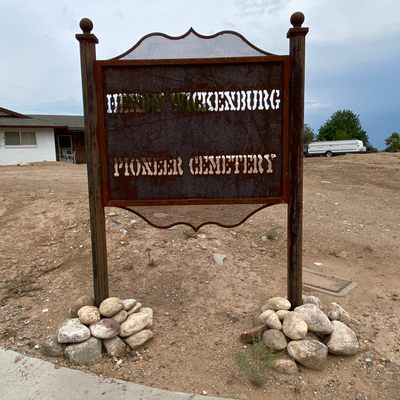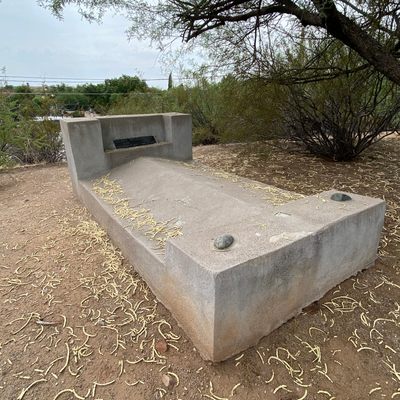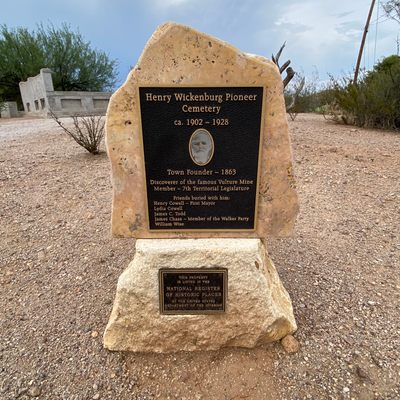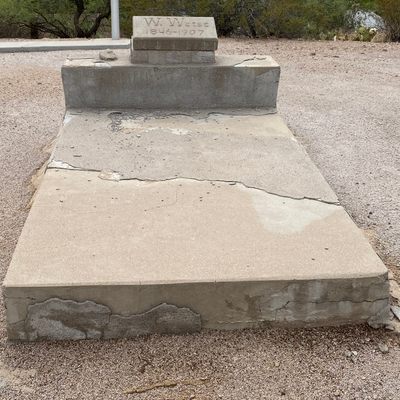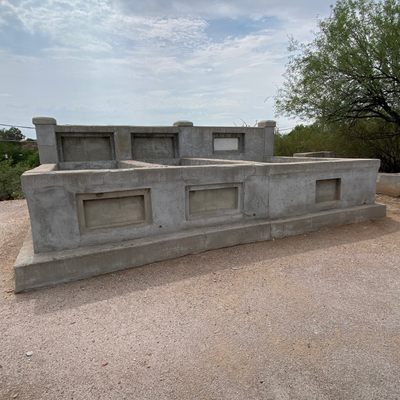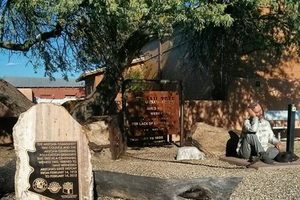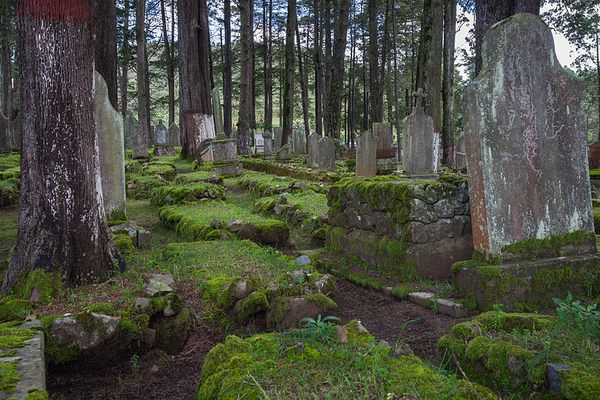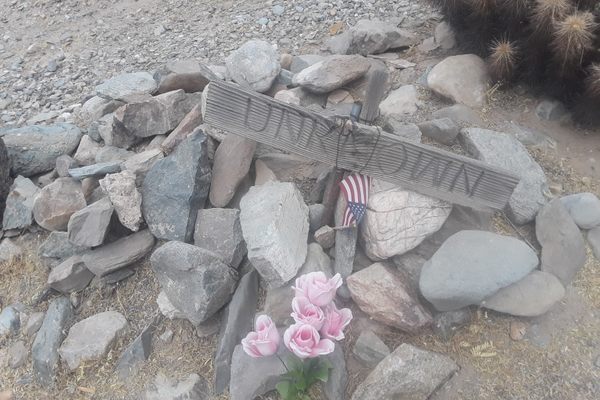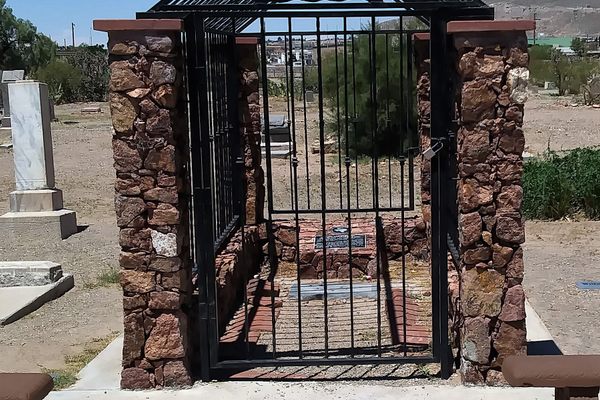About
Nestled on a hill between two houses in a quiet neighborhood, the Henry Wickenburg Pioneer Cemetery seems almost as forgotten as its famous namesake. Entering the cemetery feels like trespassing, even though there is signage and clearly marked path.
Henry Wickenburg is best remembered for discovering the Vulture Mine and as the founder of Wickenburg, Arizona. Few people realize that he was largely responsible for the creation of a dusty little agricultural town named Phoenix, now the fifth-largest city in the United States.
Born Johannes Henricus Wickenburg in Essen, Germany on November 21, 1819, Henry arrived at the Port of New York in 1847 and followed the gold rush to San Francisco in 1852. By 1863 Henry had left California for the rugged desert of the newly formed Arizona Territory and set up camp near Hassayampa Creek. In October 1863, he discovered the Vulture Mine, which was the most productive gold mine in Arizona and estimated to have produced as much as $70 million worth of gold during its operation from 1863 to 1942.
The boom towns of Vulture City and Wickenburg that sprang up around the mine were rough mining camps, known for the lawlessness associated with the American Wild West. The surrounding desert wasn’t suitable for agriculture, making it challenging to provide enough food for the miners. Wickenburg businessman Jack Swilling proposed clearing the ancient Hohokam canals in the Salt River Valley, which had been overgrown for centuries, to create an agricultural community. Henry provided much of the financing for “Jack Swilling’s Ditch,” which was the forerunner for the Salt River Project. The clearing of these ancient canals brought the large-scale irrigation required for the creation of an agricultural community large enough to support the Vulture Mine and its surrounding towns. Phoenix was settled in 1867 and thrived as an agricultural center with produce flowing to the mine and wealth from the mine flowing back to Phoenix. Henry’s bankrolling of the canal project was arguably his most long-lasting and impactful accomplishment.
Henry died of a gunshot wound to the head on May 14, 1905. At the time his death was ruled a suicide although the circumstances were suspicious and many people believed he had been murdered. He is buried in the Henry Wickenburg Pioneer Cemetery with five of his friends, Henry Cowell, Lydia Cowell, James C. Todd, James Chase, and William Wise. This private cemetery was located on a hill owned by Henry Wickenburg, overlooking the Hassayampa River valley, the town of Wickenburg, and the Wickenburg home. It was in use from 1902-1928, prior to the creation of the municipal cemetery in 1931, and contains an architectural style known as “bedstead” not commonly used in cemeteries in the southwestern United States. The cemetery was listed on the National Register of Historic Places on April 4, 2011.
Related Tags
Know Before You Go
The cemetery is located in a residential neighborhood next to a private residence at 329 South Adams Street. Brown navigational signs will direct you to the Cemetery's entrance. Park on the street and it’s an easy walk up a sidewalk to the cemetery gate.
Published
August 16, 2021
